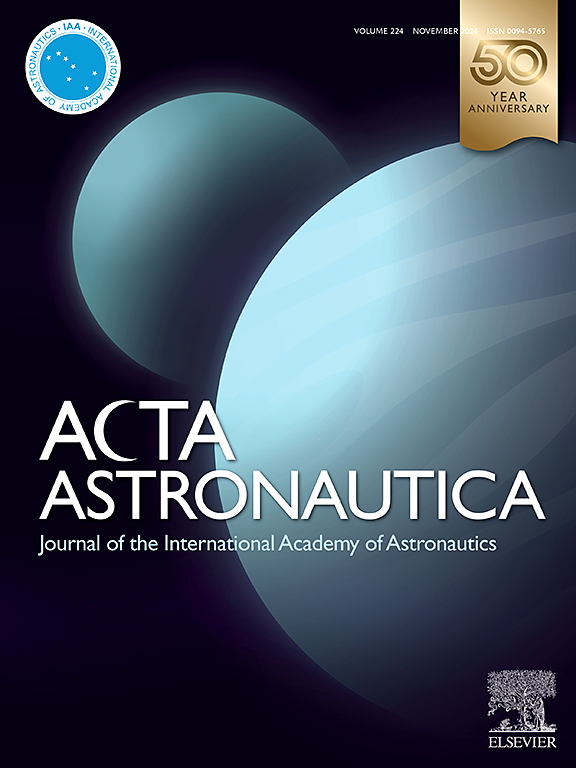Design and optimization of self-sensing voice coil actuator for spacecraft micro-vibration isolation
IF 3.1
2区 物理与天体物理
Q1 ENGINEERING, AEROSPACE
引用次数: 0
Abstract
With the development of spacecraft towards flexibility and complexity, vibration isolators with compact structure, low natural frequency, and high output force have become more and more significant. In this paper, a self-sensing voice coil actuator (SSVCA) with a high output force constant and low natural frequency is proposed for the micro-vibration isolation of the reaction wheel. The overall structure of the SSVCA with low axial stiffness and self-sensing capability is presented first. Then, a magnetic circuit modeling method based on an equivalent current model (MCM-ECM) is proposed, which can be easily embedded into an optimization algorithm for magnetic circuit optimization. The numerical simulation indicates that the proposed method can improve the output force constant of the SSVCA by 14.79 %, compared with the FEM based on the parametric analysis. Finally, experimental verification of the SSVCA is conducted, and the results indicate that (1) the output force constant error between the experiment and the proposed MCM-ECM is 0.78 % (experimental value is 9.13 N/A and MCM-ECM value is 9.05 N/A); (2) the acceleration collected by the self-sensing coil is consistent with the standard accelerometer under different frequencies, with a mean error of 0.0125 g, and the mean square error (MSE) is 0.0064 g; (3) the natural frequency of the SSVCA with 6.2 kg payload mass obtained by sine sweep frequency experiment is 5.335 Hz. The SSVCA used for passive isolation can achieve vibration attenuation of over −30 dB, while active isolation can achieve vibration attenuation of over −50 dB in the frequency range of 3.67–150 Hz, verifying its good low-frequency vibration isolation performance.
求助全文
约1分钟内获得全文
求助全文
来源期刊

Acta Astronautica
工程技术-工程:宇航
CiteScore
7.20
自引率
22.90%
发文量
599
审稿时长
53 days
期刊介绍:
Acta Astronautica is sponsored by the International Academy of Astronautics. Content is based on original contributions in all fields of basic, engineering, life and social space sciences and of space technology related to:
The peaceful scientific exploration of space,
Its exploitation for human welfare and progress,
Conception, design, development and operation of space-borne and Earth-based systems,
In addition to regular issues, the journal publishes selected proceedings of the annual International Astronautical Congress (IAC), transactions of the IAA and special issues on topics of current interest, such as microgravity, space station technology, geostationary orbits, and space economics. Other subject areas include satellite technology, space transportation and communications, space energy, power and propulsion, astrodynamics, extraterrestrial intelligence and Earth observations.
 求助内容:
求助内容: 应助结果提醒方式:
应助结果提醒方式:


